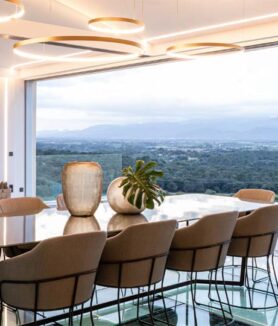Not even prestigious Pritzker prize winners such as Jean Nouvel and Richard Rogers have been spared the darts of the new monarch against contemporary architecture. These are the buildings that have been targeted by King Charles III.
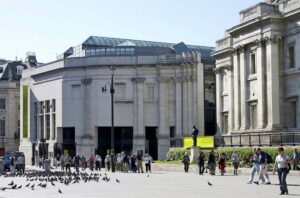
One of the virtues of Queen Elizabeth II of England that all the chronicles have highlighted these days after her death is the strict neutrality that she adopted as monarch in the face of any issue, however tricky it might be. Even on an issue as vital to the future of the United Kingdom and the crown itself as the referendum on Scottish independence that was held in 2014, the sovereign limited herself to pointing out that she hoped “the Scots would vote what was best for them “. No one doubts what she thought about it, but through her words the British crown showed impeccable equidistance.
Surely the fact that this aspect of the reign of Elizabeth II stands out especially goes with second in relation to the new monarch, her son Charles III of England. And it is that the eldest son of the queen has not been characterized precisely by his discretion when it comes to giving his opinion on certain issues, even interfering by asserting his influence as a member of the royal family.
Contemporary architecture and urban planning has been one of the issues in which Charles III of England has interfered the most. Champion of an architectural vision that many have described as nostalgic and outdated, in the past his public diatribes against architects who, in his opinion, disfigure London and other British cities with increasingly tall and aggressive high-tech buildings that overshadow monuments such as St Paul’s Cathedral and the Tower of London.
A grudge against modern architecture that comes from afar

The particular crusade of the new monarch against modern architecture dates back to the mid-1970s, when upon learning of the project for the Birmingham Central Library, designed in 1974 by John Madin in a brutalist style, Charles said of the building that it seemed to him “a place to incinerate books, not to preserve them”.
The Central Library of Birmingham, by John Madin (1974), one of the first projects of modern architecture that Charles of England criticized.
Ten years later, when the extension project for the National Gallery in London in Trafalgar Square, the work of Robert Venturi, Denise Scott Brown and Barry Edward –completed in 1991– became known, the then Prince of Wales described it as “a monstrous carbuncle in the face of a very dear and elegant friend”. In the same act in which he pronounced that phrase – known as the carbuncle speech – he added: “Why does everything have to be vertical, flat and inflexible or right angles?” As a result of that speech, the architecture magazine Building Magazine instituted the “Carbuncle Awards” to designate the ugliest building in the United Kingdom each year.
Richard Rogers and Jean Nouvel, in the sights of Charles III
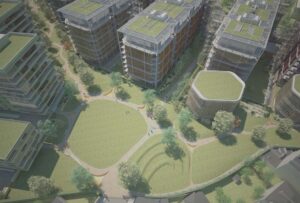
But if Charles of England has particularly targeted someone from the guild of contemporary architects, it is Sir Richard Rogers, the famous Pritzker Prize winner who died in December 2021. To the point that his opinions and interventions were decisive in making three of the projects fail. Rogers’s projects in the British capital: the remodeling of Paternoster Square and the Royal Opera House, and a housing complex in Chelsea Barracks.
In this last case, the newly crowned king did not limit himself to airing his opinions, but even sent a letter to the emir of Qatar, whose investment fund promoted the project, explaining his opposition to the plan because “it destroyed the environment “. As an alternative he proposed a design by Quinlan & Francis Terry that replicated the neoclassical style of Christopher Wren’s late 17th century Royal Hospital opposite. It should be said that many residents of the area also expressed their opposition to the Richard Rogers project.
The fact is that several weeks later, the Qatari family announced that it was paralyzing the project, depriving Richard Rogers of the development of the most emblematic real estate project of the moment in London (2009) and causing him a monumental anger, to the point of stating that the then prince had overstepped his constitutional duties. A criticism shared by many of his colleagues –among them, leading figures such as Jacques Herzog, Norman Foster, Zaha Hadid, Renzo Piano and Frank Gehry–, as well as the College of British Architects.
As a result of this case, it became known that the promoters of other important urban projects in London, such as the Battersea power plant and the remodeling of the King’s Cross area, periodically consulted their planes with the Prince of Wales to prevent him from interfering and harming the respective developments with their buds.
The 20 Fenchurch street building in London, by Rafael Viñoly, popularly known as Walkie Talkie, was another object of criticism from Charles of England, but in this case there was unanimity in considering it an eyesore, to the point that in 2015 it received the Carbuncle Award for the ugliest building in the United Kingdom.
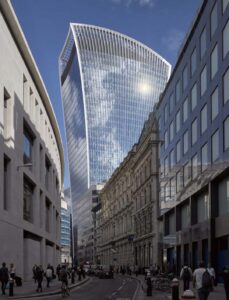
Another Pritzker Prize winner who suffered interference from Charles of England was Jean Nouvel, specifically with his One New Change project, a commercial building in the vicinity of Saint Paul’s Cathedral. In 2005 the heir to the British throne sent another letter to the promoter Land Securities complaining about the choice of the French architect. According to the then director of the promoter, Mike Hussey, the Prince of Wales had never even examined Jean Nouvel’s project; he simply dismissed it as excessively “modernist”, and suggested that the promoters of the project know the proposals of Carlos’ favorite architects. However, in this case his criticism failed to stop the project and it finally ended in 2010.
We do not know if the vehemence of the new king on this and other issues will have tempered with time or with the new responsibility acquired, but for many in Great Britain this will be one of the keys that will ensure the continuity of the prestige of the British crown that is so well cultivated queen elizabeth II
We do not know if the vehemence of the new king on this and other issues will have tempered with time or with the new responsibility acquired, but for many in Great Britain this will be one of the keys that will ensure the continuity of the prestige of the British crown that is so well cultivated Queen Elizabeth II
He didn’t like either
The Shard.
The Shard is a skyscraper over 300 meters high located in Southwark designed by the prestigious architect Renzo Piano. In 2012 he completed the construction of this pyramid-shaped, glass-clad structure, making it the second tallest structure in the UK.
Renzo Piano says that The Shard is like a sculpture in the shape of a needle emerging from the River Thames. For this, he was inspired by the railway lines that run next to the plot and the capitals of London represented by the Venetian painter Canaletto. It is worth going up to its 72nd floor and enjoying The View From The Shard, at more than 240 meters high.
Serpentine Gallery Pavilion.
 Serpentine Gallery Pavillion is another one of the best works of modern architecture in London that you can see. It is a simple and ingenious design made by Oscar Niemeyer in 2003. The construction based on steel, aluminum and glass contrasts with the green foliage of the park that surrounds it.
Serpentine Gallery Pavillion is another one of the best works of modern architecture in London that you can see. It is a simple and ingenious design made by Oscar Niemeyer in 2003. The construction based on steel, aluminum and glass contrasts with the green foliage of the park that surrounds it.
Niemeyer uses his classic lines, materials and colors in this fantastic work located in London. It is well worth walking through its walls and rooms, as well as having a drink in its cafeteria and enjoying the work and the surroundings.
Gherkins.
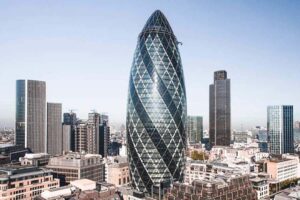 The Gherkin is another of the best works of modern architecture in London. It is a neo-futuristic skyscraper located in the City of London. At 180 meters tall and with 40 floors, it is the ninth tallest building in London and the UK.
The Gherkin is another of the best works of modern architecture in London. It is a neo-futuristic skyscraper located in the City of London. At 180 meters tall and with 40 floors, it is the ninth tallest building in London and the UK.
This curious building made of steel and glass was designed by Norman Foster and his team in 2001. The construction was completed two years later, and has served as the setting for films such as Woody Allen’s Match Point or the British series Skins. It is worth going up to the dome bar and enjoying the great views.











